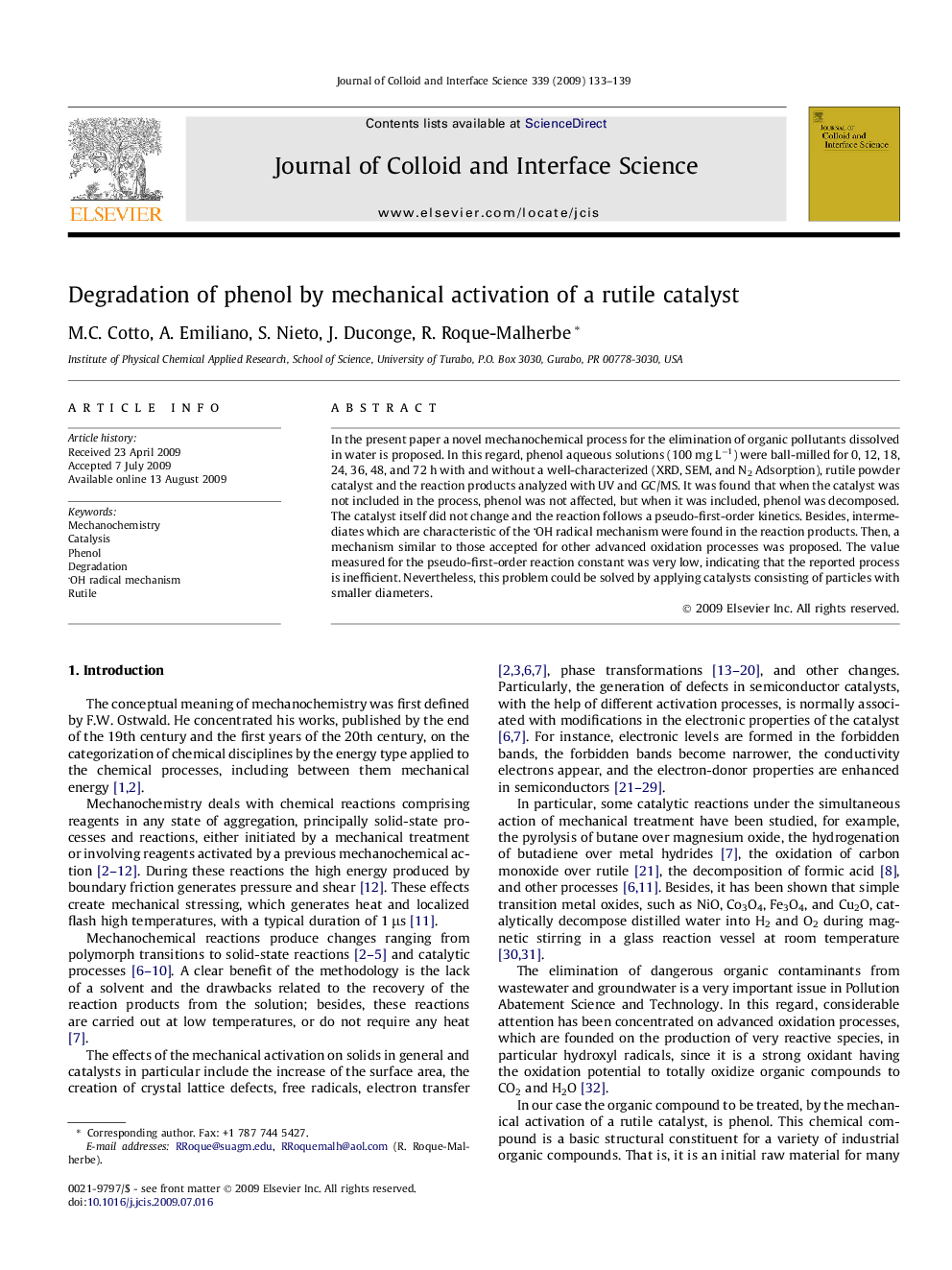| Article ID | Journal | Published Year | Pages | File Type |
|---|---|---|---|---|
| 609979 | Journal of Colloid and Interface Science | 2009 | 7 Pages |
In the present paper a novel mechanochemical process for the elimination of organic pollutants dissolved in water is proposed. In this regard, phenol aqueous solutions (100 mg L−1) were ball-milled for 0, 12, 18, 24, 36, 48, and 72 h with and without a well-characterized (XRD, SEM, and N2 Adsorption), rutile powder catalyst and the reaction products analyzed with UV and GC/MS. It was found that when the catalyst was not included in the process, phenol was not affected, but when it was included, phenol was decomposed. The catalyst itself did not change and the reaction follows a pseudo-first-order kinetics. Besides, intermediates which are characteristic of the OH radical mechanism were found in the reaction products. Then, a mechanism similar to those accepted for other advanced oxidation processes was proposed. The value measured for the pseudo-first-order reaction constant was very low, indicating that the reported process is inefficient. Nevertheless, this problem could be solved by applying catalysts consisting of particles with smaller diameters.
Graphical abstractPhenol solutions in water were ball-milled with and without a rutile powder catalyst, and the reaction products analyzed. It was established, that when the catalyst was not included in the process, phenol was not affected, but when it was included, phenol was decomposed by the OH radical mechanism.Figure optionsDownload full-size imageDownload as PowerPoint slide
